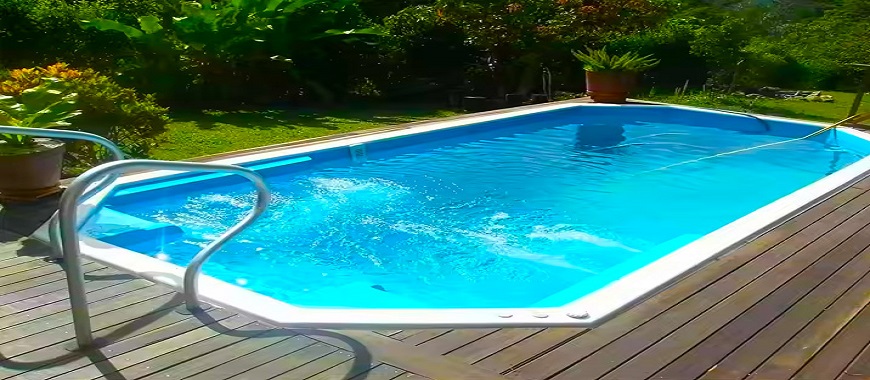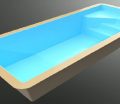
Removing adhesive from fiberglass tub surfaces can be a challenge, especially if the adhesive type is unknown. To restore a smooth and clean appearance, it’s essential to follow safe and effective methods. Various common household items and specific solvents can help with this task. Whether dealing with different types of fiberglass tub, such as those crafted using fiberglass hand lay-up techniques or other methods, using the right tools and approaches ensures minimal risk to the surface while effectively removing sticky residues. This guide will explore effective strategies, alternative options, and safety tips for removing adhesive from fiberglass tub surfaces, making it easy to restore the tub to its original shine.
The Process of Removing Adhesive from Fiberglass Tub Shower
Removing adhesive from fiberglass tub shower surfaces requires careful planning and the right approach. Different types of adhesives react differently to removal methods, making it essential to understand the specific type before proceeding. This step-by-step guide will help protect the tub’s surface while efficiently removing the adhesive.
Identifying the Adhesive Type Before Removal
Knowing the adhesive type is crucial for removing adhesive from fiberglass tub surfaces effectively and safely.
- Importance of Knowing the Type of Adhesive
- Different adhesives, like silicone, tape residue, or glue, each require specific solvents or techniques.
- Certain adhesives, like strong construction glue, may need more effort and specific tools.
- Tips for Testing Small Areas First to Avoid Damage
- Test removal products in a small, hidden area before applying them widely.
- Spot tests prevent larger areas from becoming damaged and allow adjustments in methods if needed.
Essential Tools and Supplies for Removing Adhesive from Fiberglass Tub
To achieve the best results, gather essential tools and supplies for removing adhesive from fiberglass tub surfaces. The right tools ensure efficient removal while minimizing risks of scratches or surface dulling.
- Recommended Tools
- Plastic Scraper: Useful for loosening adhesive without scratching fiberglass.
- Soft Cloth: Ideal for applying solvent and wiping away residue.
- Mild Solvent: Essential for breaking down adhesive, especially with stronger residues.
- Safety Gear to Protect Against Fumes and Residue
- Gloves: Protect hands from solvents, adhesives, and residue.
- Mask or Respirator: Prevents inhalation of solvent fumes in small, enclosed spaces.
- Eye Protection: Shields eyes from accidental splashes during adhesive removal.
Using these tools, along with careful attention to adhesive type, will provide the best results when removing adhesive from fiberglass tub with showers. This approach safeguards the tub’s surface, maintaining its smooth finish and ensuring a clean look.
How to Clean a Dirty Fiberglass Tub Easily
How to Remove Adhesive from Fiberglass Tub with Common Solvents
Choosing the right solvent is key when removing adhesive from fiberglass tub surfaces. Certain solvents work well with different adhesives and can effectively remove sticky residues without harming the fiberglass finish. Here, we cover effective options and tips for safe application.
Using Acetone for Effective Adhesive Removal
Acetone is a powerful solvent commonly used to remove adhesives from fiberglass surfaces. With its strong dissolving properties, acetone can tackle even tough adhesives while preserving the tub’s surface if applied correctly.
- Steps for Applying Acetone Safely on Fiberglass
- Dampen a soft cloth with acetone; avoid oversaturation, as too much can damage the fiberglass.
- Gently rub the adhesive area, using small circular motions to lift the adhesive.
- Wipe with a clean, damp cloth after treatment to remove any remaining acetone and adhesive residue.
- Ventilate the bathroom area well, as acetone can produce strong fumes.
- Benefits and Cautions When Using Acetone for Tough Adhesive
- Benefits:
- Works quickly and requires less physical effort.
- Effective on both fresh and dried adhesives.
- Cautions:
- Overuse or prolonged exposure can dull the fiberglass surface.
- Not suitable for use in small, enclosed areas without ventilation.
- Highly flammable, so keep it away from open flames or high heat sources.
- Benefits:
Removing Adhesive with Alternative Solvents
For those seeking gentler alternatives, mineral spirits and natural oils offer effective options when removing adhesive from fiberglass tub surfaces. These solvents can be less harsh while still working well on lighter adhesive residues.
- Mineral Spirits and Natural Oils as Alternatives
- Mineral Spirits: Effective for moderate adhesive residue, mineral spirits are less intense than acetone but still dissolve adhesives effectively.
- Natural Oils: Oils such as olive oil or coconut oil can break down adhesives gently and are safe for most surfaces.
- Tips for Using Butter or Oil for Lighter Adhesive Types
- Spread a small amount of oil or butter over the adhesive residue.
- Let it sit for 10–15 minutes to allow the oils to soften the adhesive.
- Use a soft cloth to wipe away the residue, reapplying if needed.
- For remaining traces, use a damp cloth to rinse the area, ensuring no oily residue is left behind.
When considering how to get adhesive off fiberglass tub surfaces, these alternative solvents are ideal for minor adhesive issues. They provide a safer option for users who prefer milder chemicals or are working in smaller spaces with limited ventilation.
Removing Adhesive from Fiberglass Tub:How to Get Adhesive Off Fiberglass Tub Safely
When removing adhesive from fiberglass tub surfaces, ensuring safety and preserving the tub’s finish are essential. Using controlled methods, such as heat application and gentle scraping, can soften and lift the adhesive without risking damage to the fiberglass, which is particularly important in fiberglass work for tubs where precision is crucial.
Applying Heat to Soften Adhesive
Applying heat is an effective way to soften adhesive, making it easier to remove. A heat gun or hair dryer can be used to warm the adhesive, loosening its grip on the fiberglass tub surface.
- Safe Use of a Heat Gun or Hair Dryer to Soften Adhesive
- Hold the heat gun or hair dryer a few inches from the adhesive. Set it to a low or medium setting to prevent overheating.
- Apply heat in a back-and-forth motion, evenly warming the adhesive for 20-30 seconds.
- Allow the adhesive to soften, then use a soft cloth or scraper to lift the residue gently.
- Ensure good ventilation when using a heat gun, as adhesives can emit odors when heated.
- Cautions About Potential Gel Coat Damage
- Overheating can damage the tub’s gel coat, leading to dull or discolored patches, which is particularly a concern for a new coat fiberglass tub.
- Avoid holding the heat source too close to the surface to prevent burning or bubbling of the fiberglass finish.
- Test the heating process on a small, inconspicuous area to check for potential reactions between the adhesive and fiberglass coating.
Using Gentle Scraping Techniques
Gentle scraping techniques are essential when removing adhesive from fiberglass tub surfaces. Plastic scrapers are ideal, as they are less likely to scratch or damage the fiberglass compared to metal tools.
- Tips on Using Plastic Scrapers to Avoid Scratching
- Use a plastic scraper with rounded edges to minimize the risk of surface damage.
- Work at a low angle, gently pressing under the softened adhesive and lifting slowly.
- Avoid metal scrapers, as they can scratch and permanently mark the fiberglass surface.
- For better control, apply slight pressure and scrape in short strokes, focusing on smaller sections of adhesive at a time.
- Methods for Removing Residue Without Harming the Tub Surface
- After initial scraping, use a damp, soft cloth to wipe away remaining adhesive residue.
- For stubborn patches, reapply a gentle solvent, allowing it to soak before scraping again.
- Rinse the tub thoroughly after scraping to remove any solvent or adhesive traces that may dull the finish over time.
Using these techniques provides a safe and effective approach to how to get adhesive off fiberglass tub surfaces. Controlled heat application and gentle scraping methods minimize the risk of damage while achieving a clean, adhesive-free surface.
Best Professional Pet Bathing Tubs Fiberglass Guide
Removing Adhesive from Fiberglass Tub:How to Remove Old Adhesive from Fiberglass Tub
Removing adhesive from fiberglass tub surfaces can be more challenging when dealing with older or more stubborn adhesives. Over time, adhesive residues harden, making removal difficult. Using effective techniques and appropriate solvents can simplify the process while protecting the fiberglass.
Effective Techniques for Older or Stubborn Adhesive
Older adhesives often require extra care and patience. These techniques ensure you break down stubborn adhesives without risking damage to the fiberglass surface, especially considering the properties of fiberglass tub adhesives, which may have different bonding strengths and sensitivities to solvents.
- Steps to Break Down Tough Adhesives Without Damaging Fiberglass
- Begin by applying a mild solvent to the adhesive and letting it sit for a few minutes.
- Use a plastic scraper to gently lift the softened adhesive, applying pressure only where necessary.
- For thicker residues, alternate between applying solvent and gently scraping to remove layers gradually.
- Repeat this process as needed, adding fresh solvent each time to dissolve remaining adhesive.
- Multiple Applications and Patience with Stubborn Residue
- Some adhesives may require several applications of solvent before they fully break down.
- Avoid rushing the process, as excessive force can damage the fiberglass surface.
- Using light pressure and multiple applications allows the adhesive to dissolve gradually, preserving the integrity of the fiberglass.
- In extreme cases, consider using a combination of solvent and heat to loosen adhesive that has been hardened over time.
These methods allow for removing adhesive from fiberglass tub surfaces without risking damage, especially when dealing with old or resilient adhesives.
Cautions When Using Solvents in Septic Systems
When removing adhesive from fiberglass tub surfaces, it’s essential to consider the environmental impact, especially if your home uses a septic system. Certain solvents, if not disposed of properly, may disrupt the system’s natural processes.
- Safe Disposal of Adhesive Residue
- Collect any adhesive and solvent residue in a disposable cloth or paper towel and dispose of it in the trash rather than down the drain.
- Avoid rinsing large amounts of solvent directly into the tub’s drain, as this can affect both septic and municipal systems.
- In cases where extensive adhesive removal is required, consider using a separate disposal container for solvents.
- Recommendations for Minimizing Effects on Septic Systems
- Use mild or biodegradable solvents whenever possible, as these are less likely to disrupt the septic system’s balance.
- If strong solvents are necessary, limit their usage and ensure proper disposal to protect the septic environment.
- Some experts suggest adding extra yeast to the septic system after using solvents to promote natural bacterial growth and restore balance.
By carefully managing solvents and employing proper disposal methods, you can remove adhesive from fiberglass tub surfaces effectively while protecting both your tub and septic system.
How to Achieve a Smooth Fiberglass Tub Fnish
Additional Tips for Removing Adhesive from Fiberglass Tub
At GangLong Fiberglass, we understand that removing adhesive from fiberglass tub surfaces, as well as other shower areas, requires careful handling. When dealing with sticky adhesive strips, using the right techniques can make all the difference in achieving a clean finish without harming your surfaces. Below, we offer some expert tips for removing adhesive from various materials in your bathroom.
How to Remove Sticky Adhesive from Shower Walls and Surrounding Areas
Sticky adhesives on shower walls and other bathroom surfaces can be challenging, especially on delicate materials like porcelain and acrylic. By following these steps, you can effectively remove adhesive from these surfaces while maintaining their appearance.
- Step-by-Step Guide for Removing Adhesive from Shower Walls, Including Porcelain and Acrylic Surfaces
- Begin by applying a small amount of mild solvent or warm soapy water to the adhesive to soften it.
- Use a plastic scraper or a soft cloth to gently lift the softened adhesive, avoiding metal tools to prevent scratching.
- For more resilient adhesive, apply a second round of solvent and let it sit for a few minutes before scraping again.
- After the adhesive is removed, wipe down the area with clean water to remove any residue and restore the surface shine.
- Tips for Managing Stubborn Adhesive on Non-Fiberglass Surfaces
- Non-fiberglass materials, like porcelain and acrylic, may respond well to mild solvents and oils for adhesive removal.
- Test any removal product on a small, hidden area to check for surface compatibility.
- Avoid excessive scrubbing, as it can dull or damage the surface. Instead, let the solvent work to loosen the adhesive naturally.
- For thicker or older adhesive strips, consider using a hairdryer to gently heat the area, making removal easier without harming the surface.
At GangLong Fiberglass, we emphasize careful and deliberate methods for removing adhesive from the fiberglass tub with surround surfaces. These techniques ensure that you can effectively remove sticky adhesives while preserving the integrity of your bathroom finishes.
FAQs about Removing Adhesive from Fiberglass Tub
Removing adhesive from a fiberglass tub requires patience and the right tools to avoid surface damage. Start by applying a mild solvent, such as acetone or mineral spirits, on a small, inconspicuous area. This ensures it won’t harm the fiberglass. Once confirmed safe, apply the solvent on the adhesive, letting it sit for a few minutes to soften. Use a plastic scraper or soft cloth to gently lift the adhesive. For stubborn residue, repeat the solvent application as needed. Always rinse the tub thoroughly after the adhesive is removed to ensure no residue is left behind. Additionally, ventilate the area well when using solvents to minimize fumes.
When choosing an adhesive remover for fiberglass, look for solvents that are effective yet gentle on the surface. Acetone and mineral spirits work well for tough adhesives, while natural oils or mild solvents may be best for lighter residues. Avoid harsh chemicals that could damage the fiberglass. Testing any product on a small section of the tub first is recommended. Using the right remover can prevent scratches and preserve the fiberglass finish. Many adhesive removers are available, but ensure you choose one designed to work safely on fiberglass surfaces.
The best adhesive remover for bathtubs depends on the tub material. For fiberglass tubs, acetone, mineral spirits, or natural oils are safe choices. Acrylic or porcelain bathtubs may also respond well to mild solvents, but it’s best to test in a hidden area before using any remover. Adhesive removers that work well include those designed for general household use and mild solvents. Avoid abrasive tools or chemicals, as these can harm tub surfaces. Always follow with a thorough rinse to remove any residual solvent.

As the editor of GangLong Fiberglass, I have years of experience and in-depth research, focusing on cable tray products, fiberglass solutions, and grille systems. I incorporate years of industry insights and practical experience into every content, committed to promoting the progress of the industry. At GangLong Fiberglass, my commitment is reflected in every product, from innovative cable trays to durable fiberglass solutions and sturdy grille systems. As an authoritative voice in the industry, my goal is to provide valuable information to professionals and businesses and promote forward-looking solutions.


